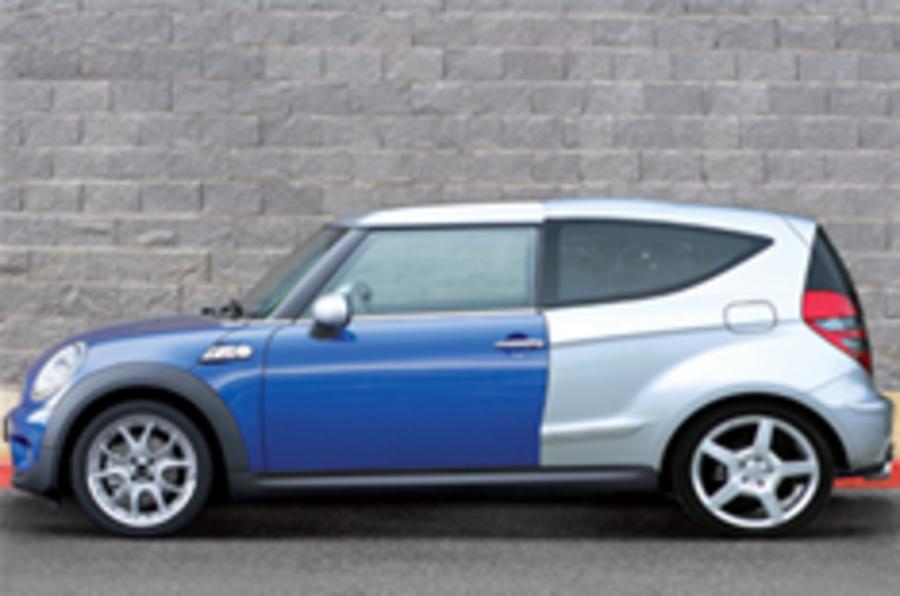BMW’s next all new Mini could be closely related to Mercedes’ next A-class, Autocar has learned – and it could also have a Smart-based little brother. Back in June, we published a story explaining that the rival German car-makers were seriously considering co-operating on the development of a new, front-wheel-drive car architecture.The new shared platform would be designed to give BMW the greater flexibility it desires to expand the Mini range, while giving Mercedes a cheaper and more conventional means to build a replacement for the A- and B-class models.Many within the car industry expect the announcement of this joint venture to make headlines at the Frankfurt motor show in September. And this week, five weeks ahead of the German show, there have been reports that BMW has already got a smaller version of the Mini in its product plan.
Born out of necessity
The background to the deal is one rooted in the problems faced by BMW and Mercedes in building their current small, front-drivers, combined with the looming emissions deadline hanging over the entire European car industry.BMW’s biggest problem with the Mini is that the car’s platform is not flexible enough to be used to build a larger, five-door version of the car to compete with the bigger superminis, or a smaller car to take on the Smart Fortwo, Fiat Panda and Toyota Aygo. Mercedes’ overwhelming desire with the next A-class is to make it more conventional and cheaper to manufacture. The current baby Merc’s ‘sandwich platform’ demands a unique powertrain installed at an angle, and it’s expensive – too expensive, they argue - for use in a car that sells at less than £14,000. Both BMW and Mercedes are under pressure to expand their small car ranges. With car-maker’s average carbon dioxide emissions across their range expected to be limited to 120g/km by 2012, neither BMW nor Mercedes can afford to take their eye off the small car sector, as making more small cars will bring their overall emissions average down considerably. The question is, how will they go about it?
Option 1: join forces on a cheaper, more flexible front-drive platform
The option favoured by many analysts and industry commentators is that BMW and Mercedes-Benz will pool their resources and develop an all-new small-car platform with a transverse, front-mounted engine, front-wheel drive and a torsion beam rear axle.The platform would have to be flexible enough to accommodate a variety of different hatchback and MPV bodystyles, and different wheelbases and front and rear overhangs; it would have to be tunable for various different ride and handling compromises too, to suit BMW for the Mini and Mercedes for the A-class; it would have to be cheaper in the long run than what Mercedes has currently; and it would have to allow BMW the opportunity better to package the interior of the next Mini hatchback.The production technology would also have to travel well. It’s hard to imagine BMW giving up its Oxfordshire Mini factory, and so whatever tooling was necessary would have to be able to work at two sites minimum. And it would have to allow BMW to produce Minis at a rate much higher than it currently can; 250,000 Minis a year won’t be enough once the hatchback, Clubman, convertible, the larger five-door, and the smaller model mooted this week are all taken into account.






Add your comment